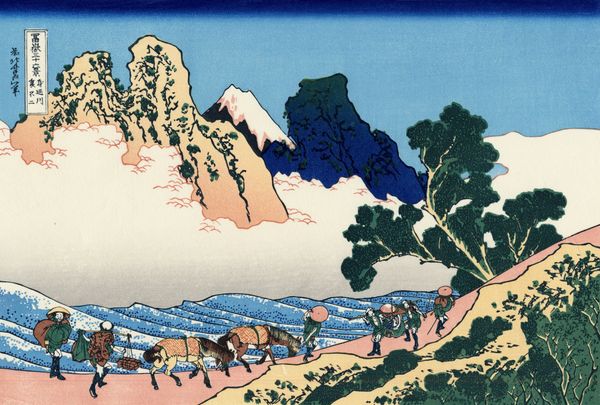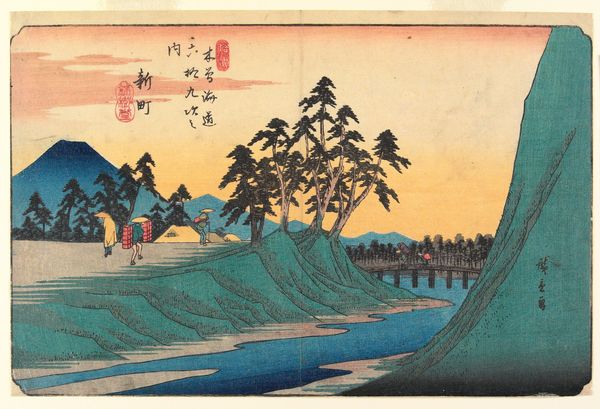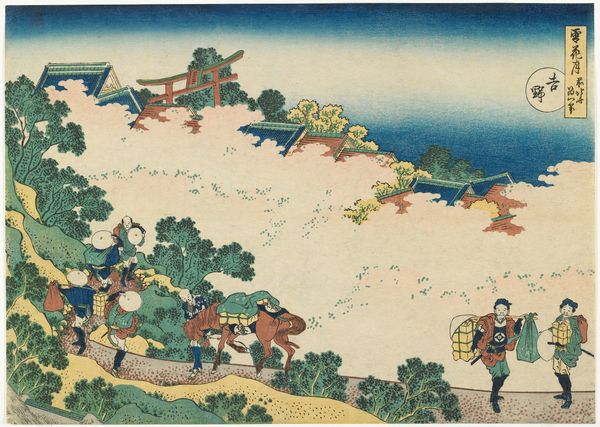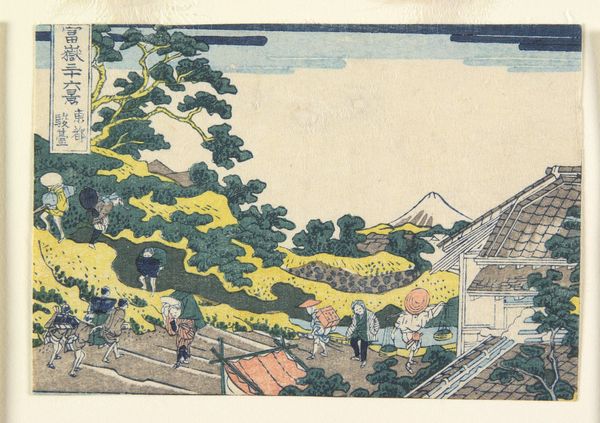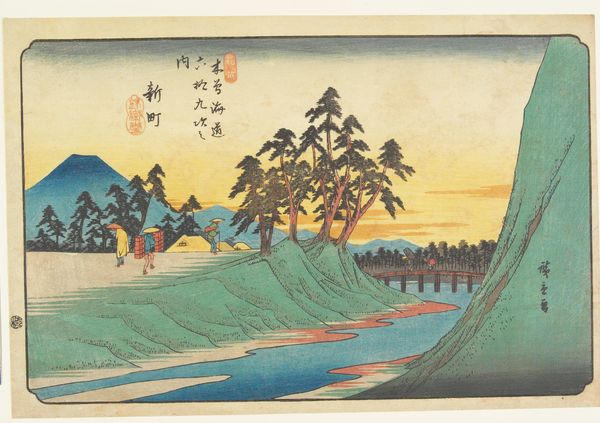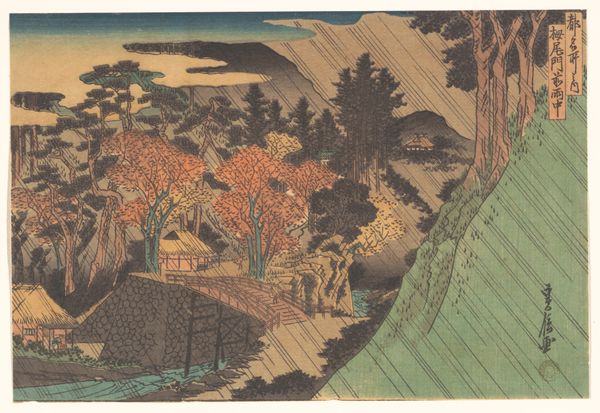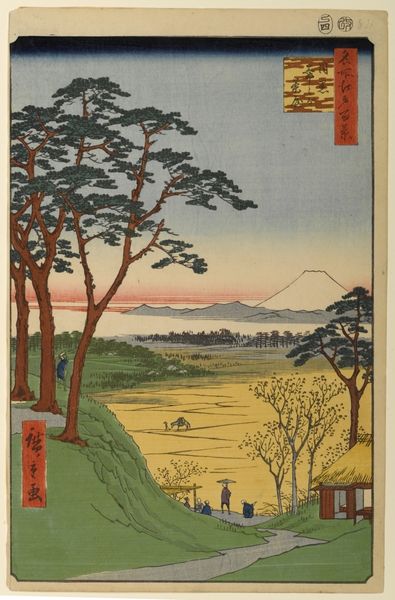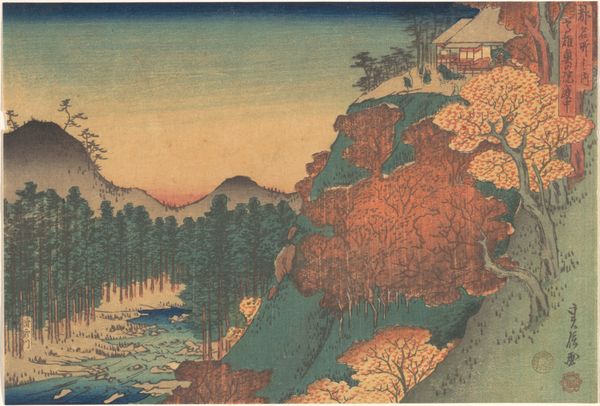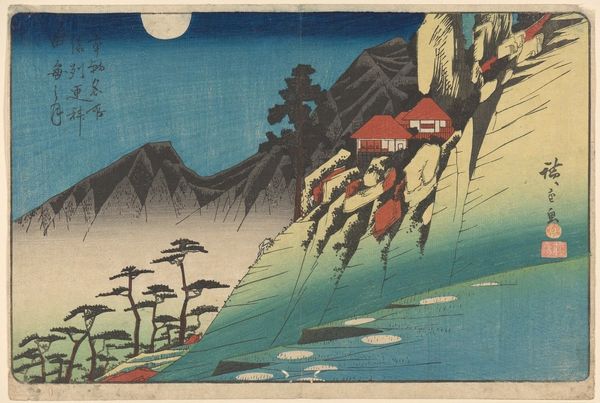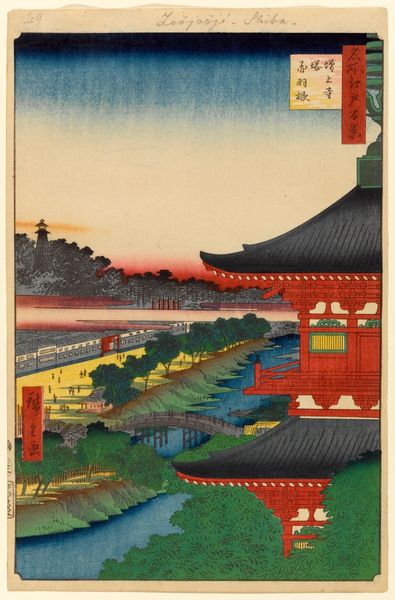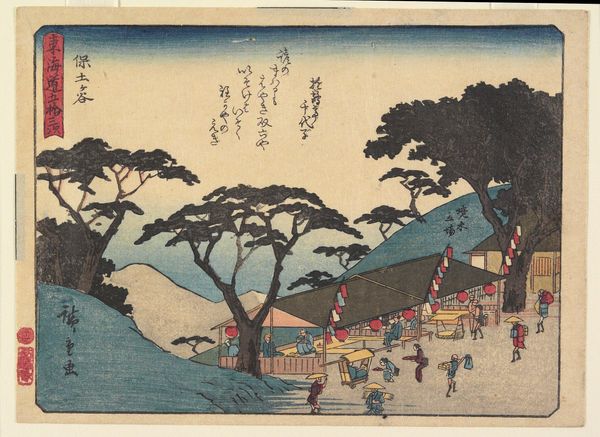
Back View of Fuji from the Minobu River 1830 - 1833
0:00
0:00
Dimensions: 9 3/4 × 14 7/16 in. (24.7 × 36.6 cm) (image, sheet, horizontal ōban)
Copyright: Public Domain
Curator: Katsushika Hokusai’s print, "Back View of Fuji from the Minobu River," created between 1830 and 1833, offers a serene vision in ink and color on paper, now residing here at the Minneapolis Institute of Art. Editor: It's interesting. The composition initially strikes me as slightly unsettling; there’s a certain awkwardness in how the large, dark forms intersect with the pastel washes and the peak of Fuji itself feels almost secondary. Curator: Perhaps, but I think Hokusai's formal genius lies in his dynamic balance of color fields and graphic lines. Notice how the flat planes of blue in the sky and stylized waves in the river contrast with the topographical density of the trees. The artist uses contrasting textures and color to flatten perspectival depth and construct a visual dialogue. Editor: But think of the materials. These are woodblocks. The labor involved is quite intensive to prepare, carve, and print with such precision, not to mention the pigments themselves derived from minerals, plants, and painstaking processing. The everyday person making these prints worked with such skill to feed a voracious popular demand. Curator: Indeed, the mode of production impacts the aesthetic quality. Look at the precise linear carving that defines forms. Consider how lines of color produce value rather than modeling. Woodblock printing lends itself to stylized simplicity, creating iconic shapes rather than illusions of nature. Editor: Precisely! And let’s not ignore the implied labor within the print itself—those tiny figures leading laden horses on that path up to the right— their efforts integral to sustaining the same systems of commerce that put this art into circulation. Curator: Agreed, by examining the interaction between representational space and decorative design, a formalist approach reveals how the artist plays with visual signifiers. How color and shape are employed, constructing meaning and challenging our perception. Editor: Ultimately, the enduring legacy stems from the integration of materials, process, and an artist’s acute observation of the toiling life. Considering this brings a renewed appreciation for both the craft and the context behind the captivating image of "Back View of Fuji."
Comments
No comments
Be the first to comment and join the conversation on the ultimate creative platform.
